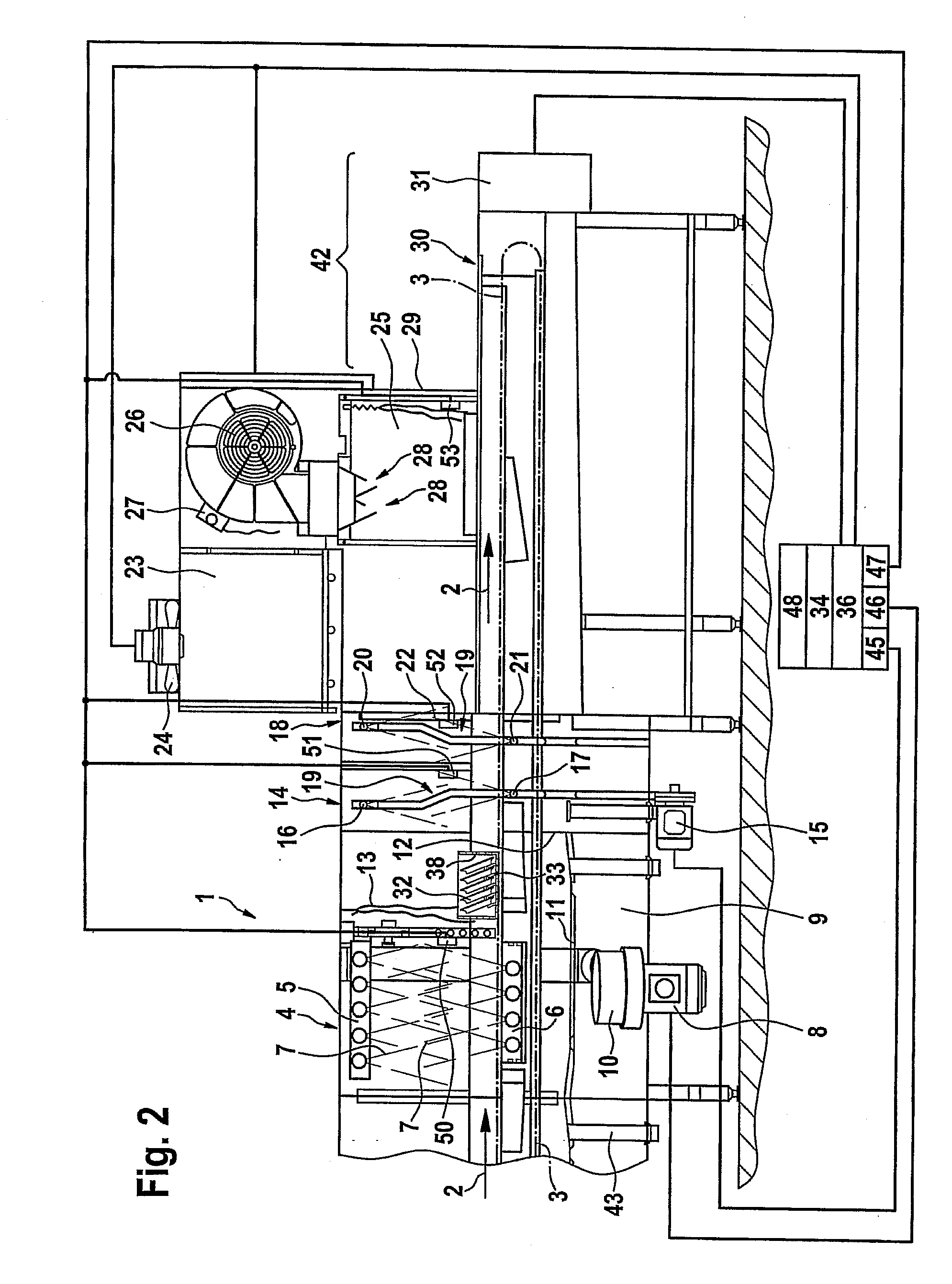Method for evaluating and guaranteeing the thermal hygienic effect in a multitank dishwasher
a multi-tank dishwasher and thermal hygienic technology, which is applied in the direction of cleaning equipment, tableware washing/rinsing machines, cleaning of low-grade items, etc., can solve the problems of not using the same germ reduction method for the evaluation of commercial dishwashers in europe, customer on-site testing of germ reduction according to this standard can only be conducted with great effort, and achieve the effect of increasing process reliability
- Summary
- Abstract
- Description
- Claims
- Application Information
AI Technical Summary
Benefits of technology
Problems solved by technology
Method used
Image
Examples
Embodiment Construction
[0029]From the representation according to FIG. 1, a pass-through dishwasher 1 can be seen, in which items to be cleaned 32 are transported in the transport direction 2 through various treatment zones of the pass-through dishwasher 1. A conveyor 3, which in the representation according to FIG. 1 is represented as a continuous conveyor belt, transports the items to be cleaned 32 through the various treatment zones of the pass-through dishwasher 1. Viewed in the transport direction 2 of the items to be cleaned 32, these first pass through a rinsing zone 4.
[0030]Within the rinsing zone 4 there is located a first rinsing system 5 and a second rinsing system 6. From this, cleaning fluid 7 is discharged in jet form. The first rinsing system 5 and the second rinsing system 6 are supplied with cleaning fluid via a first pump 8.
[0031]The first pump 8 is housed within a rinsing zone tank 9 assigned to the rinsing zone 4. In the upper region of the first pump 8 there is located a pump′ housing...
PUM
 Login to View More
Login to View More Abstract
Description
Claims
Application Information
 Login to View More
Login to View More - R&D
- Intellectual Property
- Life Sciences
- Materials
- Tech Scout
- Unparalleled Data Quality
- Higher Quality Content
- 60% Fewer Hallucinations
Browse by: Latest US Patents, China's latest patents, Technical Efficacy Thesaurus, Application Domain, Technology Topic, Popular Technical Reports.
© 2025 PatSnap. All rights reserved.Legal|Privacy policy|Modern Slavery Act Transparency Statement|Sitemap|About US| Contact US: help@patsnap.com



